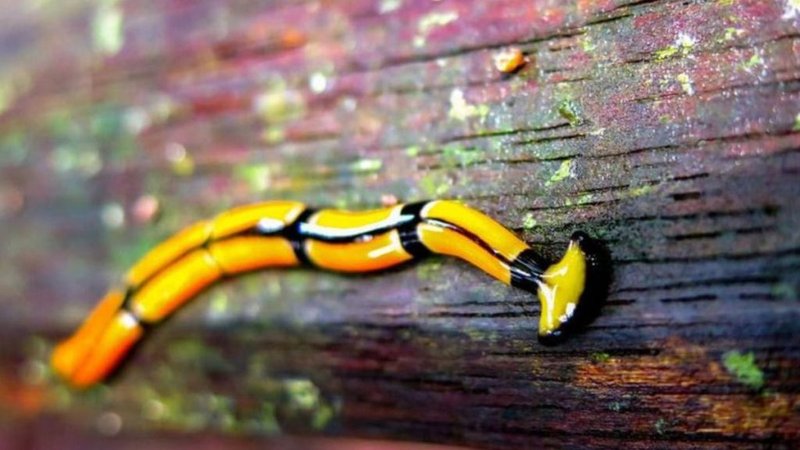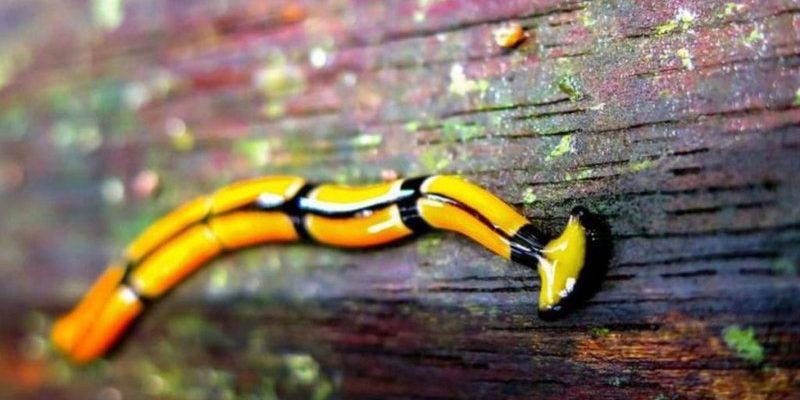
Here’s where nature comes into play. Just like how certain birds keep insect populations down, there are natural predators that help control hammerhead worms. Think of it like a well-rounded team in a sports game—each player has a role to fulfill. In this case, we’re talking about the predators that help keep the hammerhead worm population from growing unchecked. If you’ve ever been curious about how ecosystems maintain balance, you’re in the right place. Let’s dive into the world of these unexpected allies!
What Are Hammerhead Worms?
Before we discuss their predators, it’s essential to understand what hammerhead worms are. These creatures belong to the *Bipalium* genus and can often be found in tropical and subtropical regions. With their long, flat bodies and distinctive hammer-like heads, they can grow quite large—up to 12 inches in length!
These worms primarily feed on earthworms and other soil-dwelling organisms, which can be detrimental to your garden or yard. You might find them curled up in damp areas, especially after a rain. Their presence usually indicates an imbalance in the ecosystem, and that’s where natural predators come in handy.
Natural Predators of Hammerhead Worms
You might be wondering, “What eats hammerhead worms?” Surprisingly, a few natural predators play a vital role in keeping these worms in check. Here’s a rundown of some of the most effective ones:
- Snakes: Several snake species are known to eat hammerhead worms. Their slender bodies allow them to catch these worms easily. For instance, the garter snake is often seen in gardens and can feast on these slimy invaders.
- Birds: Many birds are opportunistic eaters. Species like robins and starlings sometimes include hammerhead worms in their diet, particularly when worms are their primary food source.
- Frogs and Toads: Amphibians such as frogs and toads are also known to munch on hammerhead worms. They tend to thrive in moist habitats, which are ideal spots to find these worms.
- Some Insects: Certain beetles and ants are attracted to hammerhead worms. They might not be the primary predators, but they help control their population.
This diverse group of predators creates a natural equilibrium, ensuring that hammerhead worms don’t overpopulate and wreak havoc on the ecosystem.
How Do These Predators Help Control Hammerhead Worms?
So, how exactly do these natural predators help control hammerhead worms? Let’s break it down.
When birds like robins or frogs eat hammerhead worms, they’re not just having a snack; they’re actively reducing the hammerhead worm population. This predation creates a balancing act in the ecosystem.
Imagine a garden where hammerhead worms are running rampant. They feast on earthworms and disrupt soil quality, which affects plant growth. When natural predators step in, they help ensure that the condition of the soil remains healthy. Predation can significantly reduce the number of hammerhead worms, giving earthworms a chance to rebound.
Moreover, these predators often target the juvenile hammerhead worms, which are more vulnerable. By focusing on the younger worms, they prevent the species from reaching maturity and reproducing, maintaining a healthy cycle.
Creating a Predator-Friendly Environment
If you’re dealing with hammerhead worms in your garden, attracting their natural predators is a smart strategy. It’s all about creating a habitat that supports these helpful friends.
Here are some practical steps you can take:
1. **Provide Shelter**: Incorporate plants and shrubs that offer shelter for birds and amphibians. They need safe spaces to rest and hunt.
2. **Avoid Pesticides**: Using chemical pesticides can harm not just the hammerhead worms but also their natural predators. Try natural pest control methods instead, like introducing beneficial insects.
3. **Create a Moist Habitat**: Frogs and toads thrive in moist environments. Consider adding a small pond or a water feature to attract them.
4. **Plant Native Vegetation**: Native plants attract local wildlife, including insects and birds. They can create a balanced ecosystem that naturally controls harmful populations.
By nurturing a supportive environment, you’re not only helping control hammerhead worms but also promoting biodiversity in your garden.
Challenges in Predator Control
While attracting natural predators is a great approach, it’s not without its challenges. In many areas, *hammerhead* worms may outnumber their predators, leading to an imbalance.
In urban settings, there might be fewer birds or amphibians that can assist in the natural control of hammerhead worms. Habitat destruction, pollution, and climate change can also impact predator populations, making it harder for them to thrive.
Moreover, many people may not recognize the value of these predators. Some might use harmful chemicals to eradicate hammerhead worms without considering the long-term effects on local wildlife. Understanding the role of natural predators is crucial for sustainable gardening practices.
In the end, hammerhead worms are a reminder of how interconnected our ecosystems are. While they might seem like a nuisance, there are plenty of natural predators ready to step in when needed. By fostering a supportive environment, we not only help keep hammerhead worms in check but also promote the health of our gardens.
So next time you spot a hammerhead worm, remember that nature has its own way of balancing things out. By working with these natural allies, we can create thriving ecosystems that benefit all creatures, big and small. Let’s embrace this delicate web of life and give a nod to our garden’s unsung heroes!

